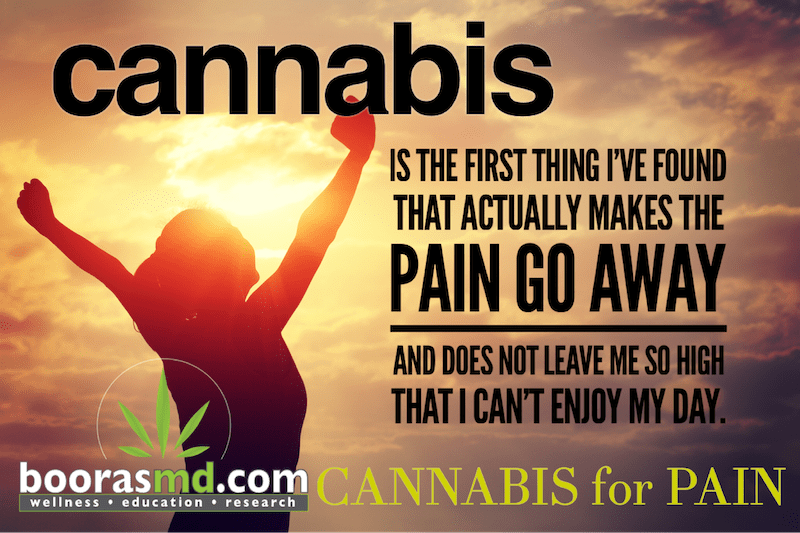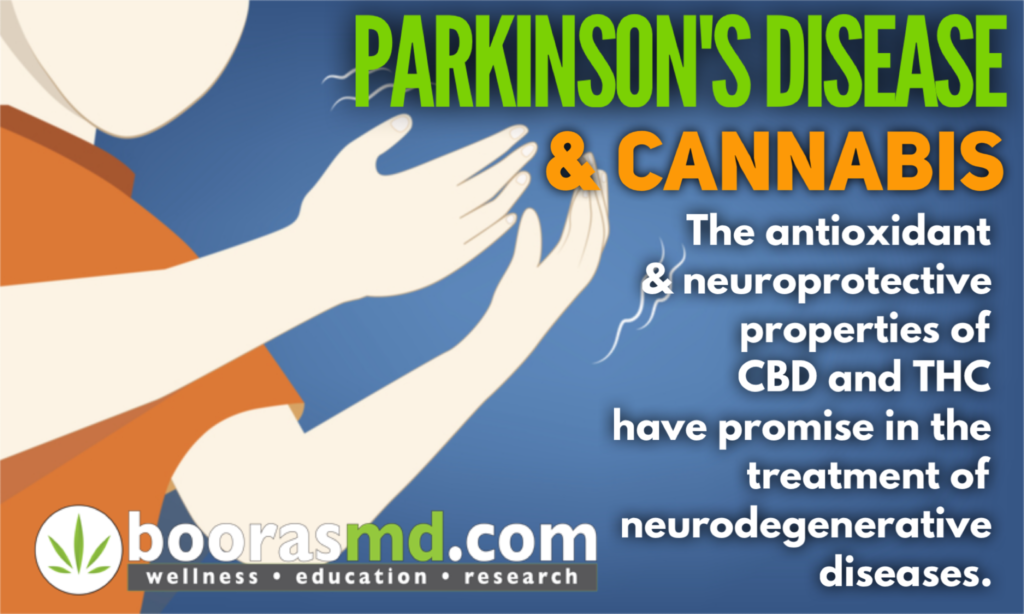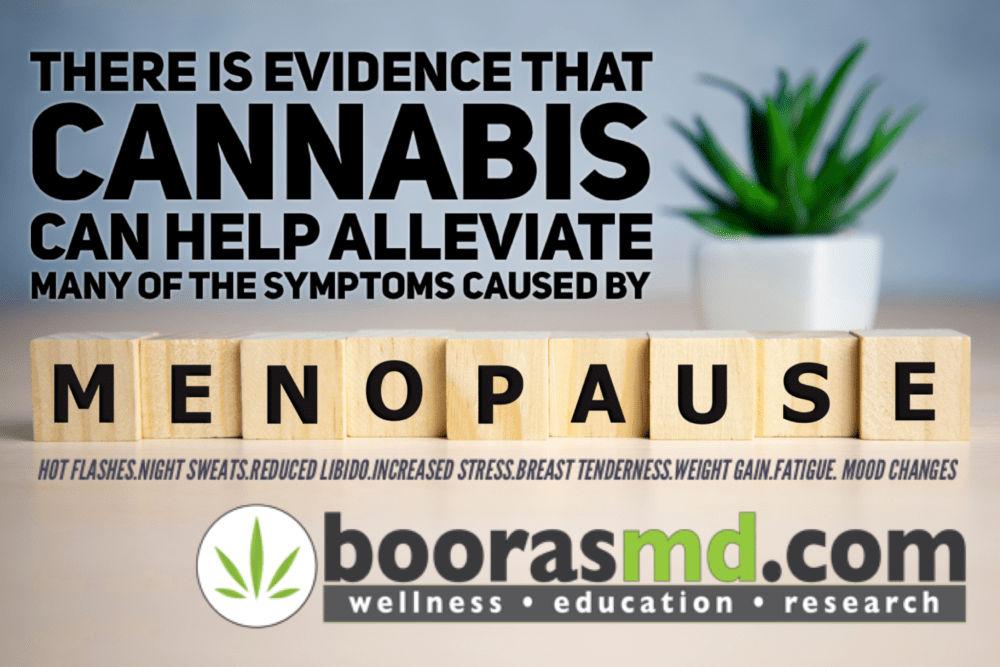Pain and Medical Marijuana (Cannabis)
Pain and Medical Marijuana (Cannabis)
Summary: Chronic pain is the single most common reason people give when they enroll in state-approved medical marijuana programs. It can be an incredibly debilitating and oppressive condition adversely affecting virtually all aspects of a persons life. In our practice Pain is tied with Insomnia and Anxiety as the 3 most common symptoms for which people come in to certify for medical cannabis.
https://cannatechtoday.com/people-use-cannabis-for-pain/
Medical Marijuana (Cannabis) appears to control pain at least as well as opioids, and with less side effects, according to surveys of people who have used both.
Description: Chronic pain represents an emerging public health issue of massive proportion, particularly in view of aging populations in industrialized nations. Responses to an ABC News poll in the USA indicated that 19% of adults (38 million) have chronic pain, and 6% (or 12 million) have utilized cannabis in attempts to treat it.
Pain results from activation of brain cells in areas of the brain that are also capable of reducing the strength of the pain signals following an injury. This type of pain is called “Nociceptive pain”, which is felt to be inflammatory. Medical Cannabis has potent anti-inflammatory properties.
Neuropathic pain arises from damage to the nerves through trauma, disease and/or chemotherapy. This can affect up to 10% of the population and it is quite distressing and is also very difficult to treat with traditional prescription medications.
Central pain is an emerging concept for pain that appears to arise from dysfunction of the nervous system. The most classic example is fibromyalgia, which is a dysfunction in the way pain signals are processed in the brain. This condition is felt to be one of the many disorders representing an Endocannabinoid Deficiency.
https://boorasmd.com/education/articles/clinical-endocannabinoid-deficiency/
Conventional treatment: Traditional treatments include pain medication, such as Opioids, Tramadol (a semi-synthetic opioid like agent), Acetaminophen (Tylenol), Anti-inflammatory medications (steroids, Ibuprofen, etc.), Anticonvulsant medications (Gabapentin, Lyrica) and Antidepressant medications (like Duloxetine, Amitriptyline, etc ).
Opioids are commonly prescribed medications that are highly addictive and potentially toxic. Opioid prescriptions have increased well over 400% since 1999. The American Medical Association reports that between 3-19% of people using prescription pain medications develop an addiction to them.
The CDC reports that “anyone who takes prescription opioids can become addicted to them. In fact, as many as one in four patients receiving long-term opioid therapy in a primary care setting struggles with opioid addiction. Once addicted, it can be hard to stop.”
https://www.cdc.gov/opioids/basics/prescribed.html
In 2014, 28,000 people died from opioid overdose, more than any other year in history. Currently, annual death rates from opioid use is over 100,000 people per year. It only takes a couple of weeks to become physically dependent on an opioid, but this can vary by the individual. https://psychiatry.org/patients-families/opioid-use-disorder
Ever seen the Hulu series, “Dopesick”? It provides the history of how Oxycontin became so widely popular, triggering the Opioid Crisis, which is still with us. The deceptive marketing strategies used by Purdue Pharma resulted in federal criminal charges to which the company admitted criminal wrongdoing on two separate occasions. Three owners of the company agreed to personally pay $6 billion.
Multiple other large US pharmaceutical companies are required to pay a total of $26 billion for their role in fueling the current opioid crisis, which continues to worsen every year.
Medical Cannabis: Both THC and CBD help control pain. It is best to use both products together as they work synergistically to optimally control pain.
https://www.leafly.com/news/science-tech/medical-marijuana-opioid-pain-relief-substitute
In a comprehensive, Harvard-led systematic review of 28 studies examining the efficacy of exo-cannabinoids (e.g. synthetic formulations of cannabinoids from the plant) to treat various pain and medical issues, the author concluded, “Use of marijuana for chronic pain, neuropathic pain, and spasticity due to multiple sclerosis is supported by high quality evidence.”
http://www.ncbi.nlm.nih.gov/pubmed/26103031
A University of Michigan March 2016 study published in the Journal of Pain provides some compelling data. They found that cannabis:
- Decreased side effects from other medications
- Improved quality of life
- Reduced use of opioids (on average) by 64%
www.sciencedirect.com/science/article/pii/S1526590016005678
Medical cannabis has generally been well tolerated in clinical trials with acceptable adverse event profiles. Their addition to the pharmacological plan for treatment of pain shows great promise.
https://pubmed.ncbi.nlm.nih.gov/18728714/
CBD (Cannabidiol) is a cannabinoid that is well known for its many therapeutic effects. It binds to many different receptors in the brain and can lessen the psychoactive effects of THC. Evidence suggests CBD can reduce drug cravings and opioid withdrawal symptoms, which suggests CBD could be an effective treatment for opioid addiction.
Cannabis-derived CBD is only available from a dispensary for people with a Medical Cannabis Card. Experts feel that this form of CBD is superior to the products widely available over-the-counter. This version of CBD, which comes from Industrial Hemp, is not regulated by the FDA. A study published in the Journal of the American Medical Society (JAMA) showed that 69% of over-the-counter CBD products tested did not contain the advertised amount of CBD!
https://boorasmd.com/education/industrial-hemp-cbd-vs-medical-grade-cannabis-cbd/
Opioids and THC in combination offer the same amount of pain-relieving effects compared to use of opioids alone. This combination can be used to reduce opioid doses. Cannabis can also be used to slowly wean patients off opioid medications altogether.
Cannabinoid and opioid pain-relieving effects both work by binding to receptors at the surface of cells and setting off a sequence of events in the cell that result in reduced pain signal release. The parallel mechanisms of action for opioids and cannabis allow for effective pain relief with co-administration.
For these reasons, cannabis is believed to supplement the effectiveness of opioids in pain management. When THC and morphine are used together, for example, the same level of pain relief is observed at lower Morphine doses compared to morphine treatments alone. If implemented, this treatment method could be effective in reducing opioid use and the associated negative side effects. Patients could start taking smaller doses of opioids to avoid addiction and relapse, since the addition of THC would provide comparable pain relief. This has the potential to effectively wean patients off their opioid regimen. There is also evidence that CBD helps reduce withdrawal symptoms as the dose is tapered.
June 2017. A newly released survey of nearly 3,000 medical cannabis patients found that nearly all respondents said they could reduce their opioid consumption after adding cannabis to their treatment regimen. The vast majority preferred cannabis to prescription pills.
In a survey of its patients, the medical cannabis community website HelloMD asked a wide range of questions examining the use of cannabis as a substitute for opioid and non-opioid based pain medication. The study was conducted in cooperation with University of California Berkeley.
Among the key findings, 97% of respondents agreed or strongly agreed that they could decrease their use of opioid painkillers when consuming cannabis. 92% of respondents said that they agreed or strongly agreed that they prefer cannabis to treat their medical condition.
Strikingly, 81% agreed or strongly agreed that cannabis alone was more effective than taking cannabis with opioids. This result was similar when patients were asked about consuming cannabis with non-opioid-based pain medication.
“The latest publication from the National Academy of Sciences clearly refuted the ‘gateway drug’ theory that using marijuana can lead to opioid addiction, instead finding evidence of cannabis having multiple curative benefits,” he said. “Our study further substantiates this. Hopefully this will awaken the public, medical professionals and legislators to the fact that cannabis is a safe, non-addictive product, available to help fight the opioid epidemic.” http://online.liebertpub.com/doi/pdf/10.1089/can.2017.0012
References:
- https://www.leafly.com/news/health/how-marijuana-relieves-different-types-of-pain
- The Biology of Cannabis vs. Opioids for Pain Relief | Leafly
- https://www.leafly.com/news/health/using-cannabis-to-reduce-opioid-dependence
- Vast Majority of Pain Patients Prefer Cannabis to Opioids, Study Finds | Leafly
- Is Cannabis Better for Chronic Pain Than Opioids? | Leafly
- Medical Marijuana for Treatment of Chronic Pain and Other Medical and Psychiatric Problems: A Clinical Review – PubMed
- MARIJUANA AND PAIN – Marijuana as Medicine? – NCBI Bookshelf
Modified by Charlie Booras, MD on August 18, 2022





